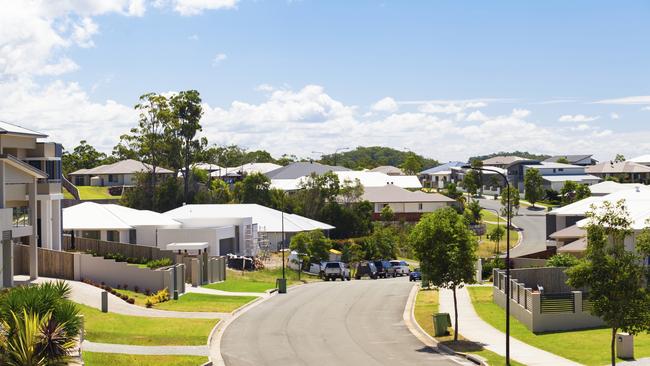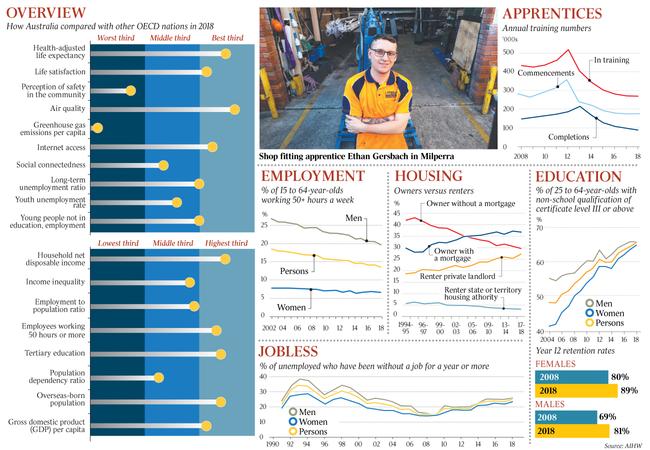Health and welfare report: home dreams fade as each generation passes
Australians are increasingly less likely to own their home with each passing generation.

Australians are increasingly less likely to own their home with each passing generation.
Since WWII, the prospect of home ownership has diminished for each newly born Australian, a study published on Wednesday shows — and housing experts warned that the trend was unlikely to change.
The Australian Institute of Health and Welfare 2019 report, which draws on census data to track home ownership over time, says the rate has fallen for each successive five-year cohort since those born from 1947 to 1951.
Home ownership rates of Australians born from 1947-1951 increased from 54 per cent in 1976, when they were aged 25-29, to 82 per cent 40 years later in 2016, when they were aged 65-69.
By contrast, the home ownership rate of those born from 1987-1991 was 37 per cent in 2016, when those people were aged 25-29, 17 percentage points lower than the 1947-1951 cohort at the same age.
The AIHW report, a two-yearly snapshot of national wellbeing, examines how Australians are faring on key areas affecting their wellbeing, including housing, employment, social support, education and justice.
Michael Fotheringham, executive director of housing think tank AHURI, said the home ownership statistics were sobering. “On current policy settings, I can’t see how this trend can reverse,” Mr Fotheringham said.
“It’s not just that people are getting into home ownership later, in an increasing number of cases they aren’t getting into home ownership at all. Our entire retirement income policy settings are predicated on an assumption of home ownership that is increasingly out of reach for so many Australians.”
Australia enjoyed a long run of house price growth from the early 2000s, tapering off only in the past few years, which has exacerbated the affordability issue.
“From around 2005 to 2018, house prices have tripled while wages have doubled,” Mr Fotheringham said.
“House prices have massively outpaced wages growth.”
Social Services Minister Anne Ruston said housing stress was an area the government was determined to address.
“The government has already delivered the First Home Super Saver Scheme and established the National Housing Finance and Investment Corporation to improve housing outcomes,” Senator Ruston said.
The AIHW report details steep reductions in home ownership rates for those younger than 35, but also for those in their 50s.
“The home ownership rate of 30-34-year-olds was 64 per cent in 1971, decreasing 14 percentage points to 50 per cent in 2016,” it says. “For Australians aged 25-29, the decrease was similar — 50 per cent in 1971 decreasing to 37 per cent in 2016.”
It also found that, since 1996, home ownership rates had gradually declined for the 50-54-year age group, down from 80 per cent to 74 per cent.

Access to safe and affordable housing is considered fundamental to personal wellbeing, and home ownership remains a widely held aspiration for Australians. It offers security of housing tenure and long-term social and economic benefits, the report says.
Yet in the past 20 years there has been a significant increase in the number of people renting, and a much smaller proportion of people owning their homes outright.
In 1996, 43 per cent of households owned their home with no mortgage, a proportion that had fallen to less than 30 per cent last year. Rental households increased from 19 per cent to 27 per cent across the same time frame.
The report notes family composition and marital status were related to housing tenure.





To join the conversation, please log in. Don't have an account? Register
Join the conversation, you are commenting as Logout